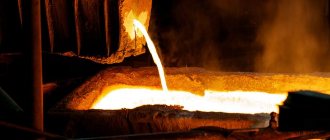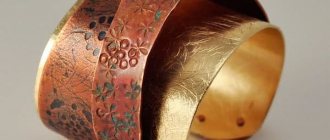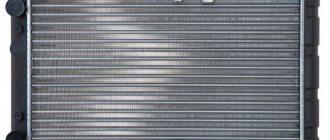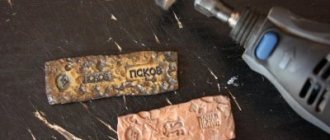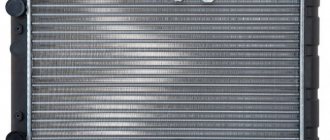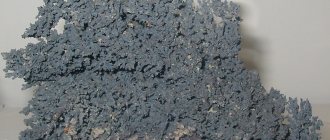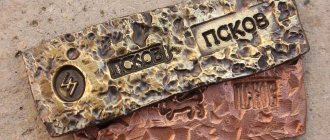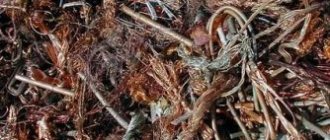Item Description
Copper is considered the oldest metal, which people learned to mine even before our era. This substance is obtained from natural sources in the form of ore. Copper is an element of the chemical table with the Latin name cuprum, the serial number of which is 29. In the periodic table it is located in the fourth period and belongs to the first group.
The naturally occurring substance is a pink-red heavy metal with a soft and malleable structure. Its boiling and melting point is more than 1000 °C. Considered a good guide.
Chemical structure and properties
If you study the electronic formula of a copper atom, you will find that it has 4 levels. There is only one electron in the 4s valence orbital. During chemical reactions, from 1 to 3 negatively charged particles can be split off from an atom, then copper compounds with an oxidation state of +3, +2, +1 are obtained. Its divalent derivatives are most stable.
In chemical reactions it acts as a low-reactive metal. Under normal conditions, copper has no solubility in water. Corrosion is not observed in dry air, but when heated, the metal surface becomes covered with a black coating of divalent oxide. The chemical stability of copper is manifested under the action of anhydrous gases, carbon, a number of organic compounds, phenolic resins and alcohols. It is characterized by complex formation reactions with the release of colored compounds. Copper has slight similarities with alkali group metals due to the formation of monovalent derivatives.
What is solubility?
This is the process of formation of homogeneous systems in the form of solutions when one compound interacts with other substances. Their components are individual molecules, atoms, ions and other particles. The degree of solubility is determined by the concentration of the substance that was dissolved when obtaining a saturated solution.
The unit of measurement is most often percentages, volume fractions or weight fractions. The solubility of copper in water, like other solid compounds, is subject only to changes in temperature conditions. This dependence is expressed using curves. If the indicator is very small, then the substance is considered insoluble.
How to care for copper products?
There are several recommendations regarding the proper care of copper items. They will help preserve the natural appearance of the metal for as long as possible, so do not neglect them.
There are several such recommendations:
- Copper utensils must be kept clean regularly. After each use, wash thoroughly and dry with a towel. Residual moisture may cause the surface to turn black.
- For cleaning, do not use abrasive substances, as well as products containing chlorine and ammonia. To prevent scratches on the surface, do not use metal spatulas, spoons, or coarse bristled brushes for cleaning.
- Copper jewelry should be wiped with damp wipes as often as possible. This is necessary in order to remove sebum from their surface.
- Products should only be washed by hand, do not use a dishwasher.
If you follow these fairly simple tips, you can significantly extend the life of copper products, as well as maintain their natural shine.
Solubility of copper in aqueous media
The metal exhibits corrosion resistance when exposed to sea water. This proves its inertness under normal conditions. The solubility of copper in water (fresh) is practically not observed. But in a humid environment and under the influence of carbon dioxide, a green film forms on the metal surface, which is the main carbonate:
If we consider its monovalent compounds in the form of salts, then their insignificant dissolution is observed. Such substances are subject to rapid oxidation. The result is divalent copper compounds. These salts have good solubility in aqueous media. Their complete dissociation into ions occurs.
Methods for blackening copper at home
Copper is a metal that has low activity and for this reason is often used for decorative purposes. Copper is used to make jewelry, home decoration, art, furniture and much more. The metal surface oxidizes under the influence of oxygen, but due to its low activity, this may take decades. The consequence of this reaction is patina - a surface film that most often has a greenish tint. Patina prevents the metal from being damaged, so it is important to know how to blacken copper at home.
Solubility of copper in nitric acid
This reaction is possible due to the fact that the process of oxidation of the metal with a strong reagent occurs. Nitric acid in diluted and concentrated form exhibits oxidizing properties with the dissolution of copper.
In the first option, the reaction produces copper nitrate and nitrogen divalent oxide in a ratio of 75% to 25%. The process with dilute nitric acid can be described by the following equation:
In the second case, copper nitrate and nitrogen oxides are obtained, divalent and tetravalent, the ratio of which is 1 to 1. This process involves 1 mole of metal and 3 moles of concentrated nitric acid. When copper dissolves, the solution heats up strongly, resulting in thermal decomposition of the oxidizing agent and the release of an additional volume of nitrogen oxides:
The reaction is used in small-scale production associated with recycling scrap or removing coatings from waste. However, this method of dissolving copper has a number of disadvantages associated with the release of large amounts of nitrogen oxides. To capture or neutralize them, special equipment is required. These processes are very expensive.
The dissolution of copper is considered complete when the production of volatile nitrogen oxides completely ceases. The reaction temperature ranges from 60 to 70 °C. The next step is to drain the solution from the chemical reactor. At its bottom there are small pieces of metal that have not reacted. Water is added to the resulting liquid and filtered.
Hydrochloric acid and hydrogen peroxide
Perhaps the most budget-friendly way to conduct an experiment at home. Etching copper with hydrogen peroxide and hydrochloric acid is exactly what a beginner should start with, since peroxide can be bought at any pharmacy, and hydrochloric acid can be easily replaced with battery electrolyte. Additionally, please note the list of the following benefits:
- the highest reaction rate of all the listed methods;
- the reaction proceeds quite well at ordinary room temperature;
- When it comes into contact with fabric or skin, the solution does not leave noticeable marks.
As for the disadvantages, there is only one - a strong concentration of hydrochloric acid can affect human health, especially if the experimenter neglects basic safety rules. Therefore, special attention should be paid to preparing the solution before starting the etching process.
Properties of copper sulfate
Dibasic salt is also called sulfuric acid and is designated as CuSO4. It is a substance without a characteristic odor and does not exhibit volatility. In its anhydrous form, salt is colorless, opaque, and highly hygroscopic. Copper (sulfate) has good solubility. Water molecules, when added to salt, can form crystalline hydrate compounds. An example is copper sulfate, which is a blue pentahydrate. Its formula: CuSO4·5H2O.
Crystalline hydrates have a transparent structure with a bluish tint and exhibit a bitter, metallic taste. Their molecules are capable of losing bound water over time. They are found in nature in the form of minerals, which include chalcanthite and butite.
Susceptible to copper sulfate. Solubility is an exothermic reaction. The process of salt hydration generates a significant amount of heat.
Solubility of copper in iron
As a result of this process, pseudo-alloys of Fe and Cu are formed. For metallic iron and copper, limited mutual solubility is possible. Its maximum values are observed at a temperature of 1099.85 °C. The degree of solubility of copper in the solid form of iron is 8.5%. These are small numbers. The dissolution of metallic iron in the solid form of copper is about 4.2%.
Reducing the temperature to room values makes the mutual processes insignificant. When metallic copper is melted, it is able to well wet iron in solid form. When producing Fe and Cu pseudo-alloys, special blanks are used. They are created by pressing or baking iron powder in pure or alloyed form. Such workpieces are impregnated with liquid copper, forming pseudo-alloys.
Read also: Device for circular saw video
Dissolution in ammonia
The process often occurs by passing NH3 in gaseous form over hot metal. The result is the dissolution of copper in ammonia, the release of Cu3N. This compound is called monovalent nitride.
Its salts are exposed to ammonia solution. The addition of such a reagent to copper chloride leads to the formation of a precipitate in the form of hydroxide:
Excess ammonia promotes the formation of a complex type compound that is dark blue in color:
This process is used to determine cupric ions.
Solubility in cast iron
In the structure of malleable pearlitic cast iron, in addition to the main components, there is an additional element in the form of ordinary copper. It is this that increases the graphitization of carbon atoms and helps to increase the fluidity, strength and hardness of alloys. The metal has a positive effect on the level of perlite in the final product. The solubility of copper in cast iron is used to alloy the original composition. The main purpose of this process is to obtain a malleable alloy. It will have increased mechanical and corrosion properties, but reduced embrittlement.
If the copper content in cast iron is about 1%, then the tensile strength is equal to 40%, and the yield strength increases to 50%. This significantly changes the characteristics of the alloy. Increasing the amount of metal alloying to 2% leads to a change in strength to 65%, and the fluidity rate becomes 70%. With a higher copper content in cast iron, spheroidal graphite is more difficult to form. The introduction of an alloying element into the structure does not change the technology for forming a viscous and soft alloy. The time allotted for annealing coincides with the duration of such a reaction in the production of cast iron without copper admixture. It is about 10 hours.
The use of copper for the production of cast iron with a high silicon concentration is not able to completely eliminate the so-called ferruginization of the mixture during annealing. The result is a product with low elasticity.
Methods using chemical reagents
One of the most common methods is the use of liver sulfur. It can be purchased at the store or prepared at home. To do this, mix powdered sulfur with potassium chloride in a ratio of 1:2 and put it on fire in a tin can. After a few minutes, the powder will melt and, after 15 minutes, will sinter, its color becoming dark brown. This process may be accompanied by a flame, which does not need to be put down.
The first method, which uses liver sulfur to blacken copper, is as follows: 10–20 grams of powder are dissolved in one liter of water, or two to three grams if it is necessary to obtain a less intense color. The copper product is dipped into the solution until the color changes, then it is removed, washed and dried. The color turns out to be brown-gray and its shades.
The almost black color of the product is obtained by heating, after treatment in a solution of liver sulfur with water and the addition of ammonia. Alcohol must be added to the saturated solution until it turns transparent blue. A coin or copper jewelry is dipped into the solution and then heated until it turns black.
Another method for obtaining black-brown color is as follows. Platinum chloride is applied to the product, for example, wetted with a brush. If the solution is not acidic, hydrochloric acid is added to it.
A red-brown patina can be obtained using a one-to-one mixture of copper sulfate and zinc chloride. The mixture of powders will need to be mixed in the same amount of water and the copper product should be immersed there for a few minutes.
Patination of copper with ammonium sulfide produces a black color. The substance (20 g) is diluted in a liter of water. You can either dip the product into the solution or apply it with a brush. A reaction occurs on the surface, resulting in the formation of copper sulfide. If you heat the plate before patination, then depending on the temperature, you can adjust the shade of the resulting color.
Blackened copper product
Another way to obtain black color is to heat a coin or jewelry at a high temperature in a solution of ammonium persulfate (9.25 g/l) and caustic soda (50 g/l). The temperature should be 90–95 degrees, the warming time should be 5–25 minutes. Repeat two to three times until the desired effect is achieved.
A light brown patina can be obtained by covering the product with the following solution:
- 124 g/l sodium dichromate;
- 15.5 g/l nitric acid (1.4);
- 4.65 g/l hydrochloric acid (1.192);
- 3–5 g/l 18% ammonium sulfide solution.
Apply the newly prepared solution with a brush, leave for four to five hours, rinse and dry. The procedure must be repeated three times.
Green patina is obtained by two main methods:
- Using a sponge, the copper surface is lubricated with a low concentration solution of copper nitrate with the addition of table salt. After drying, lubricate it with a solution containing: 94% table vinegar, 5% ammonia, 1% potassium oxalate. After drying, lubricate first with the first and then with the second solution again. The procedure is carried out until the copper reaches the desired color. After painting is completed, the surface is rubbed with brushes.
- In the second method, the surface of the copper product is rubbed several times with oleic acid. This produces a dark green substance on the surface - oleic copper. Over time, the shade changes to light green, as under the influence of moisture and oxygen, oleic copper is converted into carbon dioxide. A solution of five grams of potassium permanganate and 50 grams of copper sulfate gives a golden-brown patina. Dilute in one liter of water and heat to a temperature of 70–80 degrees. Lower the product and hold until the desired color is obtained.
To obtain a highly wear-resistant coating that protects the metal from corrosion, take in grams per liter of water: 50–70 berthollet salt, 40–50 copper nitrate, 80–100 ammonium chloride. The product is placed in a bath with a heated solution for 10–15 minutes. The color ranges from brown to olive.
You can get an amazingly beautiful golden patina. To do this, take 0.6 grams of copper sulfide, 180 g of milk sugar and the same amount of sodium hydroxide per liter of water. Aqueous solutions of the last two components are prepared separately and only then mixed. Copper sulfide is added only after the mixture has boiled. Place the product in a solution heated to 90 degrees for a quarter of an hour.
Solubility in mercury
When mercury is mixed with metals of other elements, amalgams are obtained. This process can take place at room temperature, because under such conditions Pb is a liquid. The solubility of copper in mercury disappears only during heating. The metal must first be crushed. When solid copper is wetted with liquid mercury, mutual penetration of one substance into another or a process of diffusion occurs. The solubility value is expressed as a percentage and is 7.4 * 10 -3. The reaction produces a hard, simple amalgam similar to cement. If you heat it up a little, it softens. As a result, this mixture is used to repair porcelain products. There are also complex amalgams with an optimal content of metals. For example, dental alloy contains the elements silver, tin, copper and zinc. Their percentage ratio is 65: 27: 6:2. Amalgam with this composition is called silver. Each component of the alloy performs a specific function, which allows you to obtain a high-quality filling.
Another example is an amalgam alloy, which has a high copper content. It is also called copper alloy. The amalgam contains from 10 to 30% Cu. The high copper content prevents the interaction of tin with mercury, which prevents the formation of a very weak and corrosive phase of the alloy. In addition, reducing the amount of silver in a filling leads to cheaper prices. To prepare amalgam, it is advisable to use an inert atmosphere or a protective liquid that forms a film. The metals that make up the alloy can be quickly oxidized by air. The process of heating cuprum amalgam in the presence of hydrogen causes the mercury to be distilled off, allowing the elemental copper to be separated. As you can see, this topic is not difficult to learn. Now you know how copper interacts not only with water, but also with acids and other elements.
From the list provided, select two liquids that dissolve copper and iron.
2) aqua regia
3) sulfuric acid (solution)
4) nitric acid (conc.)
5) alkali solution
Write down the numbers of the selected liquids in the answer field.
Both metals react with nitric acid, but only iron reacts when heated, because HNO3 (conc.) passivates iron. HNO3(conc.) does not react with gold, platinum, tantalum, iridium, niobium, rhodium. Both of these metals dissolve in aqua regia.
Both ferric chloride and copper sulfate have their own price, toxicity, the need for heating and danger to surrounding objects. I would like not to be afraid of spilling the reagent or hopelessly ruining something. For example, if the reagent spills outside the hole in the sink, the sink has to be wiped and sprinkled with soda. I liked the phrase from the forum: “getting rid of the rust stains that cover half my room is worth a lot.” There is a standard alternative in the form of etching with sodium, potassium and ammonium persulfates (with the release of chlorine.); but we can go even further.
There was a user on the Internet called Murlock, who suggested etching copper in the following way: – 100 ml of pharmacy 3% hydrogen peroxide; – 30g citric acid; – 5g table salt. Citric acid should be poured into hydrogen peroxide with complete mixing, then salt is added with complete mixing. Shaking the container is more effective than stirring with a spoon.
It is assumed that Murlock is the inventor of this method in the Russian Federation in 2012. And he didn’t bother with patents, but simply gave this method to the world - I love people like that. It's a pity I don't know the name; Belarusian
Properties of the solution: – the etching volume is 0.35 cm 3 of copper per 100 ml of solution. 40% ferric chloride is capable of dissolving 100 g/l copper, which is equivalent to 10 g and 1.12 cm 3 (0.56 cm 3 for 20%) - by volume of dissolution, the efficiency of the solution is 1.6 times less; – the cost of 0.5 liters will be 4×4 rubles + 2×16 rubles + 1 ruble = 49 rubles – in terms of money, it is 2.38 times more expensive than anhydrous iron, 1.44 times more expensive than hexahydrate. On the other hand, prices are different everywhere; and no one bothers you to immediately buy a liter of 3% peroxide or 30% hydroperite tablets (6×1.5g per 100ml); – the solution cannot be resuscitated and reused; – the solution used is not suitable for copper plating of surfaces (you can throw iron into ferric chloride saturated with copper - it will be copper-plated without electrolysis). Therefore, the author incorrectly writes about this method as the cheapest. But its amenities are such that you don’t care about the price. Formally, you can etch copper with nitric acid - and this will be the cheapest, but most dangerous option: even rubber gloves will not save you. Or hydrochloric acid with peroxide: a very cheap option, but the volatility of the solution is high.
Convenience: – availability of components in a regular store (chemically pure ferric chloride and copper sulfate are sold exclusively in chemical stores and in containers of 1 kg); – the safety of the solution, clean and contaminated, both for the body and for surrounding objects – you can poison at home right in the room (covered with a lid and with ventilation, of course); – crazy redox potential of 1.775V – fast etching speed becomes available precisely at room temperature; – the solution does not require neutralization if it is poured onto metal surfaces (draining into the hole in the sink is not required - rinse the sink and you’re done); – there is no release of gases hazardous to breathing (oxygen is released). If, if the proportions are violated, the solution evaporates into the air, the indication will be strongly expressed by odor; – after washing the board under running water, the reagent is completely cleaned, no dirty spots remain (as happened with ferric chloride); – uniform etching over the entire surface, no side etching of copper; – the spent solution, even after decomposition, is safe for pipes and the environment.
Read also: Refrigerator best reliable models
Reactions as I imagine them (again a whole broth): when mixing these 3 components, no reaction occurs. But as soon as copper or another metal appeared: – reaction with citric acid: copper citrate and hydrogen, 3Cu + 2C6H8O7 → Cu3(C6H5O7)2 + 3H2; – reaction with hydrogen peroxide: 2Cu + 6H2O2 → 2Cu(OH)2 + H2 + 2O2 + 2H2O; – the peroxide itself is reduced faster due to copper as a catalyst, trying in vain to oxidize back: 2H2O2 ↔ 2H2O + O2; – oxygen reacts with copper: Cu + O2 → 2CuO; – water reacts with copper under the action of the NaCl catalyst: 2Cu + H2O → 2CuO + H2; – copper oxide reacts with citric acid: 3CuO + 2C6H8O7 → Cu3(C6H5O7)2 + 3H2O; – copper hydroxide reacts with citric acid: 3Cu(OH)2 + 2C6H8O7 → Cu3(C6H5O7)2 + 3H2O + 3O2; – NaCl does not participate in the reaction: sodium is more active than copper, and it cannot displace it. But somehow the salt speeds up the dissolution of the copper citrate in the solution. It turned out that salt is a corrosion catalyst that allows you to effectively destroy oxide films; If you arrange an excess of hydrogen peroxide and catalysts, there will be an independent reaction of citric acid oxidation with peroxide - transformation into 3-oxopentanedioic acid in a short time: C6H8O7 + H2O2 → C5H6O5 + CO2 + 2H2O.
Practical test with preparing the solution according to the instructions (there is a smell of citric acid and peroxide, as if they did not react with each other, but were splashing separately). Were laid at the same time: a piece of copper radiator
5x5x5 (hollow), POS 61 solder, piece of aluminum radiator
1x5x20 (non-hollow), Soviet board with unknown solder and solder tracks. Bubbles immediately began to appear on the surface of the copper. After 3 minutes, bubbles appeared on POS 61 and the board’s solder, and an unpleasant, pungent odor appeared (it doesn’t irritate the eyes, but it seems to irritate the throat). After 7 minutes, the aluminum woke up (the protective film was destroyed) and began to gas harder than anyone else. The bubbles, bursting, raise drops of the solution to a distance of 7-10 cm. There is no heating of the solution.
Indeed, lead is noticeably soluble in citric acid - lead citrate is formed, instantly soluble in water: Pb3(C6H5O7)2 3H2O. Copper with citric acid forms copper citrate: (Cu2C6H4O7)2·5H2O. Aluminum – aluminum citrate: C6H5AlO7 – hydrogen is expected to be knocked out of citric acid; perhaps he gasses them.
I checked the solution after an hour: the piece of copper remained a very thin strip of about 0.1x1x2, the solution turned blue-green, the aluminum continued to gas (it turned out to be a large piece). The POS 61 solder collapsed like in ferric chloride: it turned black and became even more ductile. Unknown solder from the board: the solder tracks have completely dissolved (?!), the solder joints have dissolved almost completely. It is difficult to compare the effectiveness of solder removal: the board is different, the soldering areas are simply filled with plenty of solder. As a result, the solder was no longer in contact with the board, but could not be squeezed out of it with an awl: the result was metal in the shape of the letter “I”, like a rivet. I had to use miniature pliers.
That is, the result in an hour is similar to the result in half an hour with 20% ferric chloride heated to 50 degrees (dissolution of copper to floating pieces, average destruction of solder). In this case, the solution is prepared without gloves, there is no need to heat it, and other advantages.
. no one needs ferric chloride 2kg.
Subtleties of working with the prepared solution: – do not heat the solution. The reaction of the acid with the peroxide will intensify - a large amount of heat will be released, causing the jar to split. The nature of the reaction is similar to a rocket engine: acid as fuel, peroxide as an oxidizing agent - the longer the reaction, the warmer and faster it is. The reaction is controlled by adding cold water to the solution (but you need to add it quickly, about 2 minutes). The critical temperature cannot be allowed: there will be an explosion and the solution will spray into the air. An exothermic reaction is also possible if the proportions are not strictly met + there is a lot of copper on the board (copper is a catalyst); – salt is not only a catalyst, but also a solvent for the precipitate. Salt should not be iodized. A strong excess of salt, as a catalyst, can also cause self-heating of the solution; – there is no need to spare citric acid: preventing the precipitation of copper citrate (slightly soluble, will settle on the board); – but excessive consumption of peroxide will cause excessive release of oxygen and sharply reduce the effectiveness of etching. In this case, you need to add citric acid; – if you acidify the solution with hydrochloric or sulfuric acid, the reactions go even faster; – Citric acid can be replaced with tartaric acid. Or vinegar (lower efficiency, unpleasant smell, cheaper). Then it will not be blue copper citrate that will precipitate, but copper acetate; – it is better to place the board with the copper facing down so that the copper citrate immediately settles to the bottom and does not interfere with the board being etched. If you etch two sides - vertical arrangement; – not only copper is etched off, but also iron. As a result, iron can prevent etching by taking over the peroxide - it will have to be added; – if it is necessary for copper to be etched, but aluminum not, EDTA is added to the solution; - this is a way to test with time: whether peroxide expires if it is not stored in the refrigerator. If it fizzles out, it will not poison (although the smell may remain in the bottle); – pure citric acid (without impurities) costs 170 rubles per kilogram in chemical stores. In regular stores you can buy illicit goods in the form of a brown powder - the etching will be weakened. Therefore, you need to at least visually evaluate citric acid before use; – the solution is suitable for pickling up to 12 hours after preparation; – if you make 3% peroxide from hydroperite tablets, a distillate is not necessary; – with LUT it works like clockwork, with photoresist – it depends on the photoresist, it’s different for everyone; – if you constantly brush bubbles off the copper with some kind of brush (at the same time, a new solution flows to the copper, copper citrate is removed), then etching goes faster; – people write about cases of manufacturers diluting peroxide, reducing its concentration – as a result, their first experience with citric acid was a failure; – using not 6, but 7 tablets of hydroperite per 100 ml of water speeds up the reaction by approximately 2 times.
Read also: Grips for fastening sandwich panels
By the way, grams are abbreviated as “g”, not “g”. The use of “gr” in official documents makes them invalid, according to Federal Law No. 102-FZ of June 26, 2008.
(added 06/20/2016) More subtleties: – maximum safe temperature for heating the solution: 35 degrees. The etching rate strongly depends on temperature, so it makes sense to heat the solution and control the heating using a thermal fuse (TK24-00-2-35 or its analogues); – if you dare to experiment with excess hydrogen peroxide, you need to immerse yourself in a solution of thermal fuse KSD-9700 (40 degrees), wrapped in polyethylene. If the solution begins to self-heat and goes beyond 40 degrees, an alert should sound in the form of a beeper or something similar; – plastic containers smell of citric acid even after washing – they are not suitable for food use. It may also be unsuitable for storing metal items; – if a blue tint predominates in a blue-green solution, the solution is exhausted; – I made an incorrect calculation of the price of 0.5 liters of solution (comparing it with a kilogram container of ferric chloride). Ferric chloride (pack of 1 kg 175 rubles, both hexahydrate and anhydrous) is 5 rubles more expensive than citric acid, so the calculations are as follows: 5 × 4 + 25.5 + 1 = 46.5 rubles - 2.31 times more expensive than anhydrous ferric chloride and 1.36 times more expensive than hexahydrate; – the test solution yesterday was 100 ml in volume (the same as today), and iodized salt was used; – the solution left for 8 hours stopped reacting with the board (having dissolved a significant amount of solder). But as soon as I cleaned the board with a hard brush, the bubbles appeared again: I made a mistake by placing the board with the solder facing up - lead citrate isolated its surface from etching. And the solution did not dry out in 8 hours under a loose lid; – opening the lid and leaving it for 10 hours, the solution became completely ineffective (18 hours + leaky environment). And he threw aluminum there. The peroxide has fizzled out, but the citric acid remains. And the bubbles started running again. Throwing in a large piece of aluminum, I got a quick release of heat. The same process: citric acid destroyed the oxide film, aluminum and water began to gas and release heat, and were also eaten away by the same acid.
(added 06/21/2016) The unpleasant odor is copper citrate from a solution in the air, rising with gas bubbles: it really irritates the mucous membrane. Aluminum does not generate heat as much because... upon reaction with citric acid, it begins to become coated with aluminum citrate. Aluminum citrate also dissolves in the solution, it becomes dark blue in color and completely loses its transparency.
(added 07/02/2016) At 28 degrees, oxygen bubbles can be seen accumulating on a plastic peroxide bottle. Indeed, it needs to be stored in the refrigerator; ideally - on a shelf at 0 degrees.
(added 07/09/2016) I tried to etch the board that did not etch completely the first time. As a result, it was completely lost on one side (the bottom), all the elements fell off, including the high-frequency transformer (its legs dissolved). Therefore, I simply did not hold it in enough, or the solution ran out of steam (the first time I poisoned it without closing it, the second time I covered it with a lid - and both times I did not stir it). And if you stir, the effect will be even better. Yes, traces of solder remain, but the metal legs are easily pulled out of it with pliers (it crumbles), and the “solder” itself has stopped conducting current. Maybe it's stannous citrate? The color is very similar.
(added 07/14/2016) Once again I emphasize the advantage of citric acid over ferric chloride: greater transparency of the solution - the process of copper dissolution itself is visible; It’s clear when to remove the board.
The result of any chemical reaction is guaranteed only if the proportions of the reagents are observed. Having put ferric chloride on the eye, today at work I didn’t finish the board: I didn’t put in enough (what a lot of inconvenience it caused, and: hexahydrate had to be put in 1.67 times more).
(added 07/21/2016) It is better not to use hydroperite. More expensive, more difficult to store, aggressive. 35% concentration – 12 times more hydrogen peroxide; I accidentally eroded the cuticle on my nail - no need to do a manicure. It also releases additional oxygen when the board is soaked (bubbles settle on the board and interfere with etching). Although the etching itself is more intense. It’s better to increase the amount of acid, especially since Murlock wrote: don’t regret it. Judging by Wikipedia, 6 tablets of hydroperite contain 90 ml of peroxide - one more is missing to overcome the 100% mark.
(added 08/03/2016) Zinc, aluminum, iron react with this solution. There is a suspicion that aluminum is a catalyst + reacts with water, reducing its volume - the solution got out of control and began to heat up (there was a possibility of an explosion if left inactive, although all you need to do is splash cold water). However, the heating was weak, up to 30 degrees; the temperature rose very slowly. In general, be more careful with metal catalysts.
(added 10/03/2016) Another good method of etching: automotive electrolyte with peroxide.
(added 10/28/2016) 2 interesting facts were discovered: – for the first time, double-sided PCB was etched. And it was the side facing the bottom of the container that was etched much faster than the other. Indeed, copper acetate immediately slid to the very bottom after the reaction; and periodic stirring of the solution led to its removal from the bottom. 100ml was enough to etch a 2 x 100x60mm board. And then another one of the same one-sided, and then he began to eat another one of the same - but the time ran out, and the solution was drained without completing the experiment. The solution has potential: even if it turns very blue, it continues to work, and its price per square centimeter of copper has fallen.
(added 11/04/2016) I tried etching with copper sulfate and salt. Slow (many hours without heating), smelly (if without a lid), toxic, difficult to wash off from the container (I had to throw away the plastic tweezers). It’s also terribly smelly when making the solution. When adding salt to a solution, the effect of salting out gases from the solution occurs - the solution begins to gas strongly and foam (depending on the purity of the vitriol and water). In general, salting out gases is an interesting thing: try throwing salt into boiling water or mineral water - it will gas strongly: carbon dioxide leaves the solution.
(added 12/31/2016) The theory that citric acid decomposes independently into carbon dioxide and water under HC conditions has not been confirmed. Does not decompose at OH.
Again about etching copper and alloys based on it
Copper etching.
What else can you come up with? It would seem that it has already been told and discussed 100 times, and a lot of books have been written. And indeed, there are enough publications at the Masters Fair. But a good article covering what methods generally exist, which is better, which is cheaper, was never found. Let's try to fix this. Copper etching, like any metal, can be carried out using chemical and electrochemical methods (plating). Electrochemical etching is of higher quality, but more complex. This method requires certain equipment and reagents. In a good way, this is the lot of galvanizing shops and enterprises. Chemical etching can be divided into industrial and domestic applications. In industry, they usually use compounds based on concentrated acids and reagents that are terribly hazardous to health. Everything would be fine: the etching speed is high and the quality is high. But there are many “buts”. It is quite difficult, and often unrealistic, for an ordinary alchemist to obtain concentrated acids. You need to work with them with extreme caution using professional protective equipment in a specially equipped room. A fume hood is required, but in extreme cases a normal fume hood will do. And, naturally, strict requirements are imposed on the storage of such substances. By the way, concentrated acids and a number of chemical reagents are precursors. This means that their turnover is subject to strict control and accounting. Therefore, there is little point in considering these methods. We smoothly move on to household methods of chemical etching. It would take too long to talk about all the technology and nuances. Subsequent articles will be devoted to this. Let's get to the heart of the matter. We have a blank in the form of a copper sheet with an applied mask/stencil for etching.
A reasonable question arises: “What and how to poison?” An inquisitive reader will answer without hesitation: “Of course, ferric chloride (FC)!” It is available at any radio store and is not expensive. That’s true, but ferric chloride has many disadvantages. 1. This is a powdery substance, and very hygroscopic. When dosing, fine dust of chemical fluid settles everywhere, no matter how hard you try. And within a day, having absorbed moisture from the air, it appears as hard-to-remove red stains on furniture and clothes. Due to its hygroscopicity, CG will not be stored for a long time either. 2. ChL solution is an opaque brown-brown liquid. There is no talk at all about visual control of the etching process. Taking out the workpiece each time and rinsing it to control it clearly does not add convenience. 3. During the etching process, copper precipitates on the metal surface, so constant stirring of the solution is required. 4. The etching rate during the process drops significantly due to the accumulation of reaction products in the solution. 5. And the last nail in the coffin of ChL - of all the available household compositions, ChL has a low etching rate. Of course, it can be increased by heating to 60C*, but this will not give a big increase in the speed and stability of the reaction.
What else can you use to etch copper/brass? In the same radio stores you can find ammonium or sodium persulfate . Pros: 1. Transparent solution, you can visually control the etching process. 2. Higher and more stable etching speed than that of cold liquid. 3. Does not leave dirty, difficult to remove stains. Cons: 1. Low prevalence/availability. 2. Higher price. 3. Increased consumption compared to cold liquid. 4. Instead of stains, it leaves whitish bald spots or holes in clothes, which in itself is not very good. 5. Heating of the composition is required.
- Here you go! - The reader will exclaim. - What should we do?!
— Yes, there are a couple more methods/recipes in stock
